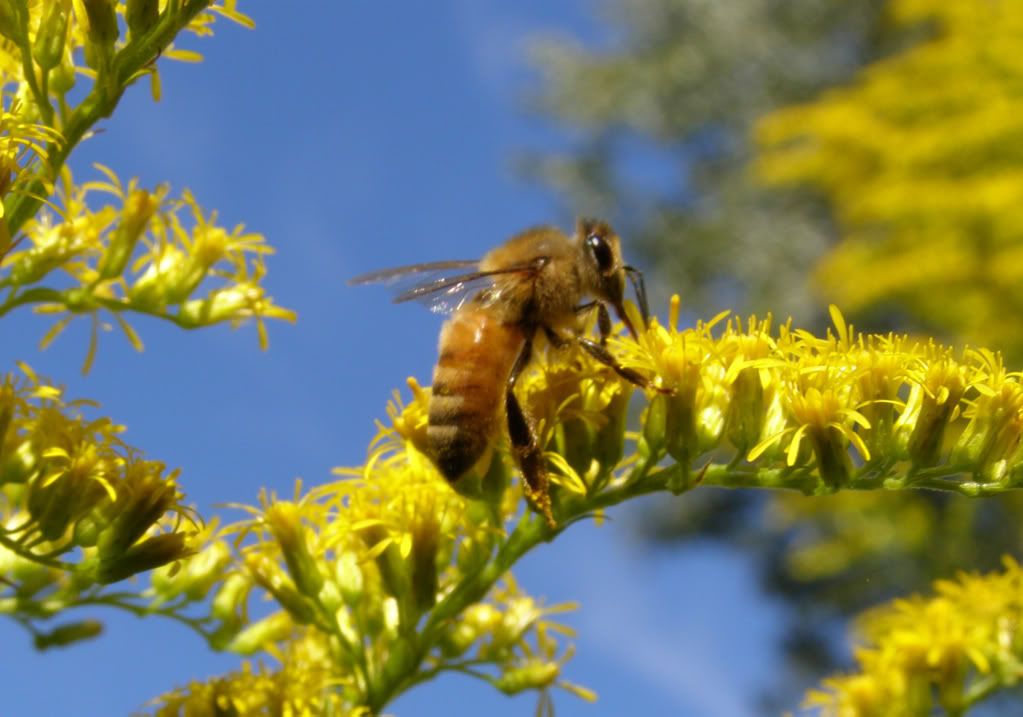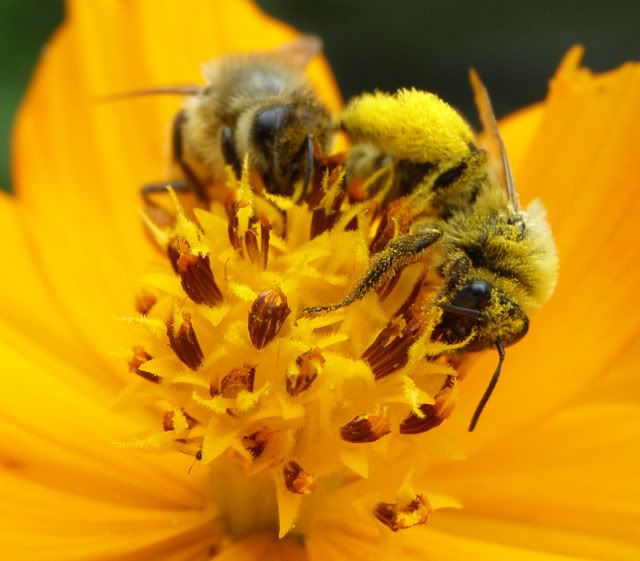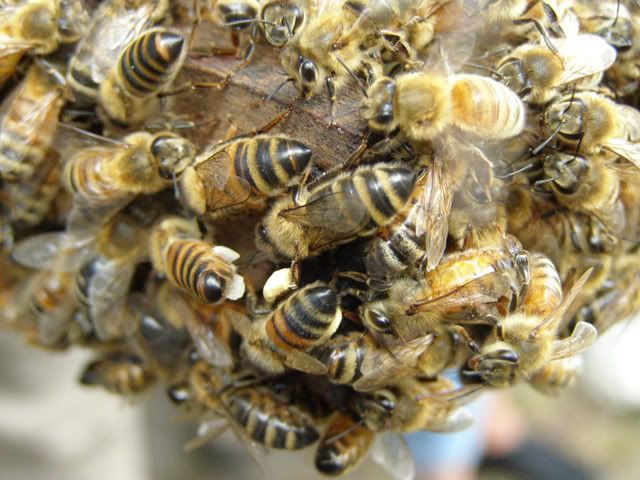
Ladies and Gentlemen this is the Honey Bee, Apis mellifera. I find it very annoying how I can go to a website such as BugGuide.net and find people who have posted pictures in their ID request section of the Honey Bee. Going back to their home page a second (assuming they haven't edited their page as of this posting,) there is a full color picture of Honey Bees!
Now it is understandable that some people out there just aren't sure of their ability to identify insects. And for those people it's perfectly fine to seek a second opinion. Still though, I find it hard to believe people don't know what they are. Is there honestly anyone in America who hasn't seen the Honey Bee?
Now something that might be confusing is all this killer bee nonsense. Africanized Killer Bees are the exact same species, the difference is their variety grew up in Africa and only the strongest hives survived. Before modern day beekeeping practices were perfected the only way to get honey from the hive was to destroy it or leave it incredibly vulnerable to attack. So the strongest hives in this case were the ones that drop everything and launch a full attack on whatever was looking at the hive funny. Compare this to some European varieties where stinging just isn't done. I'm a member of a beekeeping club and it's astounding. We'll have a meeting every few months and almost always we'll open a bee hive up. We smoke the thing properly, open the hive and start passing around the frames which make up the hive. Not only is no one wearing a bee suit but no one has been stung at any of our meetings for the past year. (Why aren't my hives like this!?)


Yet another possibility is that some other bees look similar to honey bees. But even in this picture I would think the difference is obvious. The other bee here has way more hair all over it's body.

So that leaves me with one other possibility. Maybe it's just that people rely on color to much. Apis mellifera has maybe 3 or 4 main color patterns. And all can be present or mixed within the same hive. Because the queen bee mates with multiple males it's common to see more than one color pattern represented. Here you can see a few individuals in a hive that have more pronounced darker stripes, while next to them are ones who barely have any visible. And around them are something in between this. It's actually possible to find honey bees with full black abdomens and others who have full orange/brown.
I see people starting to turn over a new leaf with all this Colony Collapse Disorder (CCD) going around. They're listening to the ads out there and planting plants for the environment. It's great to see people helping out but I'm left to only conclude that no one cared enough before to really learn why bees are important... let alone what they looked like.